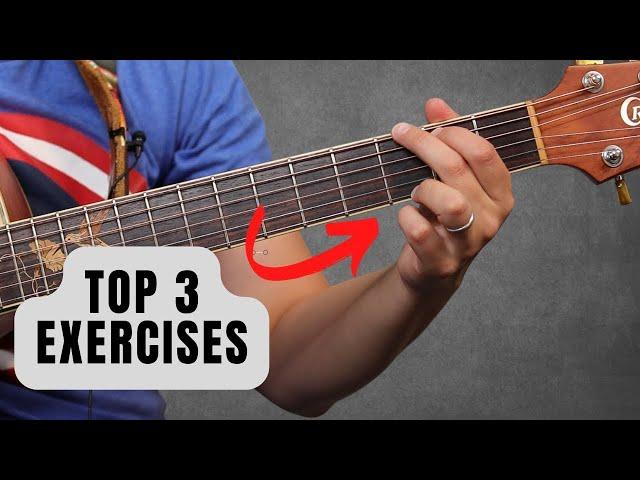Are you tired of feeling like a clumsy ogre stumbling through chord transitions on your guitar or piano? Do your fingers fumble and bumble like a drunkard trying to find their way home after a wild night out? Fear not, aspiring musicians, for we have the key to unlocking smooth and seamless chord transitions that will have you playing like a rock star in no time. Get ready to enhance your playing skills and leave those clumsy ogre days behind as we dive into the magical world of mastering chord transitions.
Contents
- 1 Understanding the Basics of Chord Transitions
- 2 Developing Finger Strength and Dexterity for Smoother Movements
- 3 The Role of Muscle Memory in Mastering Chord Changes
- 4 Practicing Effective Techniques for Quick and Clean Transitions
- 5 Incorporating Strumming Patterns to Elevate Chord Transitions
- 6 Navigating Common Challenges and Solutions in Chord Transition Mastery
- 7 Expanding Your Repertoire: Applying Skills Across Musical Genres
- 8 FAQs
- 9 Keep on Jamming!
Understanding the Basics of Chord Transitions
So you’ve mastered the art of playing chords on your instrument, but when it comes to transitioning smoothly between chords, you’re feeling a little lost. Fear not, dear musician, for we are here to guide you through the basics of chord transitions!
First things first, let’s talk about finger placement. Make sure your fingers are in the right position for each chord before you attempt to switch. There’s nothing worse than fumbling around trying to find the right notes mid-song. Trust me, your audience will thank you!
Next up, timing is key. Just like a well-oiled machine, your chord transitions should be seamless and precise. Practice transitioning between chords slowly at first, making sure each note is clear and crisp. Once you’ve got the hang of it, you can start picking up the pace.
And lastly, don’t forget to have fun with it! Experiment with different chord progressions and see what sounds best to your ears. Remember, music is all about expression and creativity, so don’t be afraid to add your own flair to your chord transitions. Who knows, you might just stumble upon a new sound that’s uniquely yours!

Developing Finger Strength and Dexterity for Smoother Movements
Are you tired of your fingers feeling like limp noodles when trying to execute intricate guitar solos or intense piano compositions? Fear not, for we have some tips and tricks to help you develop finger strength and dexterity for smoother movements.
First off, let’s talk about finger exercises. Just like going to the gym to pump some iron, your fingers need their own workout routine. Try incorporating exercises like finger push-ups (pressing each finger individually against a flat surface) or finger lifts (using a rubber band to exercise each finger independently). These exercises will help strengthen your finger muscles and improve flexibility.
Another great way to improve finger strength is by incorporating finger yoga into your daily routine. Yep, you heard that right – finger yoga. Simply hold each finger individually for a few seconds, then release and repeat. This will help improve blood flow to your fingers and increase their range of motion.
Lastly, don’t forget about the importance of proper technique when playing an instrument or typing on a keyboard. Make sure to keep your fingers relaxed and maintain good posture to prevent unnecessary strain. With a little practice and dedication, you’ll be on your way to smoother movements in no time.
The Role of Muscle Memory in Mastering Chord Changes
Have you ever found yourself struggling to master those tricky chord changes on the guitar? Well, fear not – muscle memory is here to save the day! Muscles have minds of their own, you see, and they love to hold on to information. So, the more you practice those chord changes, the more your muscles will remember exactly what to do. It’s like having a bunch of little muscle minions doing all the hard work for you!
But wait, there’s more! Muscle memory not only helps you nail those chord changes, but it also frees up your brain to focus on other important things - like wondering if you left the oven on, or if that weird noise your car is making is something to be concerned about. So go ahead, let your muscles take the wheel while your brain takes a much-needed vacation!
Now, I know what you’re thinking - “But what if my muscles are lazy and don’t want to remember those chord changes?” Well, fret not (see what I did there?), because with consistent practice, your muscles will have no choice but to shape up and get with the program. It’s all about building that muscle memory muscle, so to speak. So keep strumming away and watch as those chord changes become second nature faster than you can say “G-C-D.”

Practicing Effective Techniques for Quick and Clean Transitions
Transitioning smoothly from one task to another can be a real challenge, especially when you’re juggling multiple responsibilities. But fear not, there are effective techniques you can use to make those transitions quick and clean!
First and foremost, prioritize your tasks. Make a list of everything you need to accomplish and determine which tasks are most urgent. Focus on completing one task at a time, rather than trying to tackle them all at once. This will help you stay focused and avoid feeling overwhelmed.
Another helpful technique is to set timers for each task. Give yourself a specific amount of time to work on a task before moving on to the next one. This will not only help you stay on track, but it will also create a sense of urgency that can boost your productivity.
Lastly, don’t forget to take breaks! It’s important to give yourself a breather in between tasks to recharge and refocus. Whether you take a quick walk around the block, do a few jumping jacks, or simply close your eyes and take a few deep breaths, a short break can do wonders for your mental clarity and overall productivity.

Incorporating Strumming Patterns to Elevate Chord Transitions
Strumming patterns can make a world of difference when it comes to elevating your chord transitions. Gone are the days of boring, monotonous strumming – it’s time to spice things up and take your playing to the next level! Here are some tips on how to incorporate strumming patterns to make those chord transitions pop:
First things first, mastering a variety of strumming patterns is key. It’s like having a whole arsenal of spices in your kitchen – you wouldn’t just stick to salt and pepper, would you? Experiment with different patterns like the down-up-down-up or the chucka-chucka to add some flair to your playing.
Next, practice transitioning between chords smoothly while maintaining your strumming pattern. This might take some time to get the hang of, but don’t get discouraged! It’s all about muscle memory and training your fingers to move seamlessly from one chord to the next while keeping the rhythm going.
And finally, don’t be afraid to get creative with your strumming patterns. Throw in some accents or mutes to really make your playing stand out. Remember, music is all about expression and experimentation, so don’t be afraid to push the boundaries and try new things!
So, you’ve mastered playing individual chords like a boss. But when it comes to smoothly transitioning between them, it feels like you’re playing a game of musical Twister. Fear not! We’ve got your back with some hilarious solutions to help you navigate those pesky chord transitions.
First up, let’s talk about the dreaded F chord. This bad boy has caused many a guitarist to break out in a cold sweat. The solution? Practice, practice, practice! But to make it a bit more fun, try incorporating some yoga poses into your practice routine. Warrior pose while playing an F chord, anyone?
Next, let’s tackle the awkward transition from a G to a C chord. It’s like trying to gracefully dismount a wild bucking bronco. To make this transition smoother, pretend you’re a cowboy riding a mechanical bull. Giddy up, partner!
Lastly, we can’t forget about the classic D to A transition. It’s like trying to pivot from gracefully sipping tea at a fancy party to rocking out at a punk concert. The solution? Imagine you’re a spy dodging laser beams while making this transition. Duck, dodge, and rock on!
Expanding Your Repertoire: Applying Skills Across Musical Genres
So you’ve mastered a few musical genres and you’re feeling like a rock star. But why limit yourself to just one style when you can conquer them all? Expanding your repertoire by applying your skills across different musical genres is like becoming a musical chameleon, blending in wherever you go.
First, take a look at the skills you already have and identify the common threads that run through them. Maybe it’s the way you use dynamics to build tension, or your killer sense of rhythm that keeps the beat steady no matter what. These abilities are like secret weapons that you can unleash on any genre.
Next, experiment with adding elements from one genre into another. Mix a little jazz improvisation into your blues solos, or try adding some funky slap bass into your country tunes. You’ll be surprised at how these unexpected combinations can breathe new life into your music.
Remember, music is all about having fun and expressing yourself. So don’t be afraid to step out of your comfort zone and explore new genres. Who knows, you might just discover a hidden talent for polka or avant-garde experimental noise. The possibilities are endless when you open your mind and your ears to the world of music.
FAQs
Why do chord transitions matter in playing?
Well, if you want to sound like a pro instead of a stumbling beginner, smooth chord transitions are key. Plus, it’s way more impressive to watch someone effortlessly move from one chord to another like they’ve been doing it their whole life.
How can I improve my chord transitions?
Practice, practice, practice! Just like anything else in life, the more you do it, the better you’ll get. Start slow and gradually work your way up to faster transitions. And don’t forget to pay attention to your hand positioning and finger placement – you don’t want to end up in a tangled mess!
What are some tips for mastering chord transitions?
One handy tip is to visualize the chord shapes in your head before you make the actual transition. It’s like mental rehearsal for your fingers. Also, try practicing with a metronome to build up your speed and accuracy. And remember, Rome wasn’t built in a day – be patient with yourself!
Can I use any shortcuts to make chord transitions easier?
Sure, there are a few cheats you can use to make your life easier. Try using simpler chord voicings or using a capo to change the key of a song. And if all else fails, you can always just pretend like you meant to hit that wrong note – jazz it up a bit!
Keep on Jamming!
So there you have it, folks! With these tips and tricks up your sleeve, you’ll be transitioning between chords like a pro in no time. Remember, practice makes perfect, so keep strumming those strings and don’t get discouraged if you hit a few sour notes along the way. Before you know it, you’ll be dazzling audiences with your seamless chord transitions and impressing your fellow musicians with your newfound skills. So grab your guitar, banjo, or ukulele and keep on jamming!



